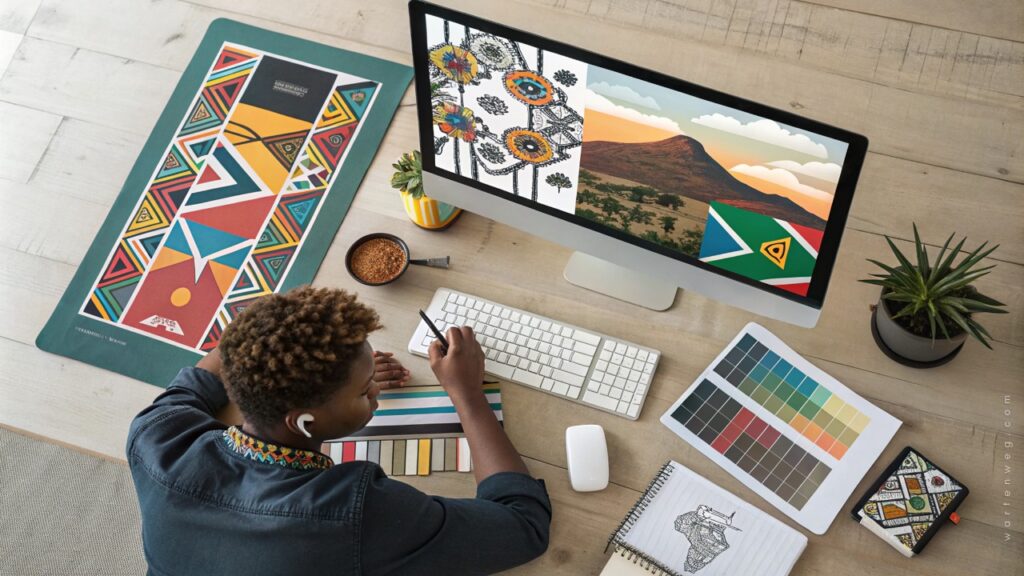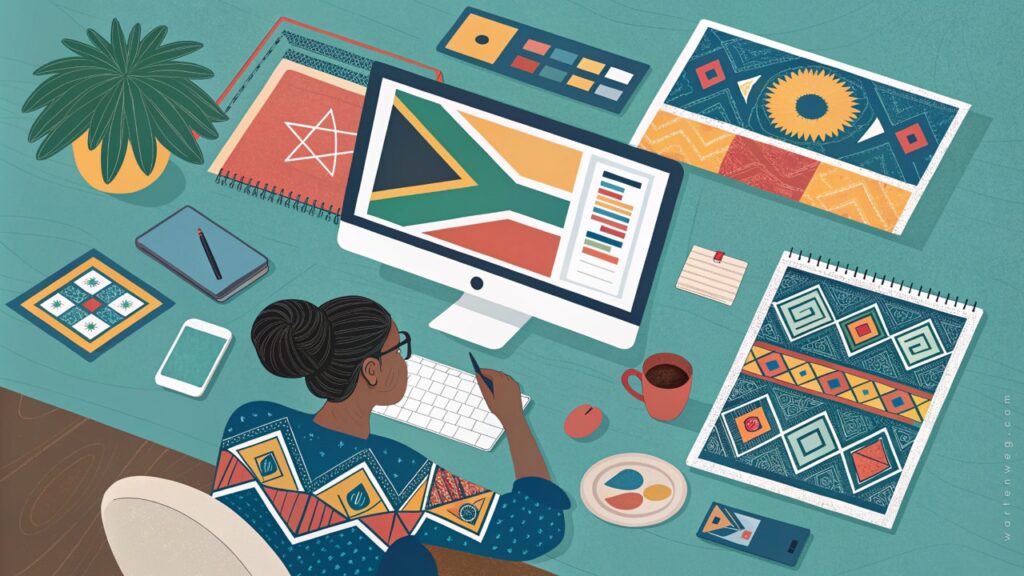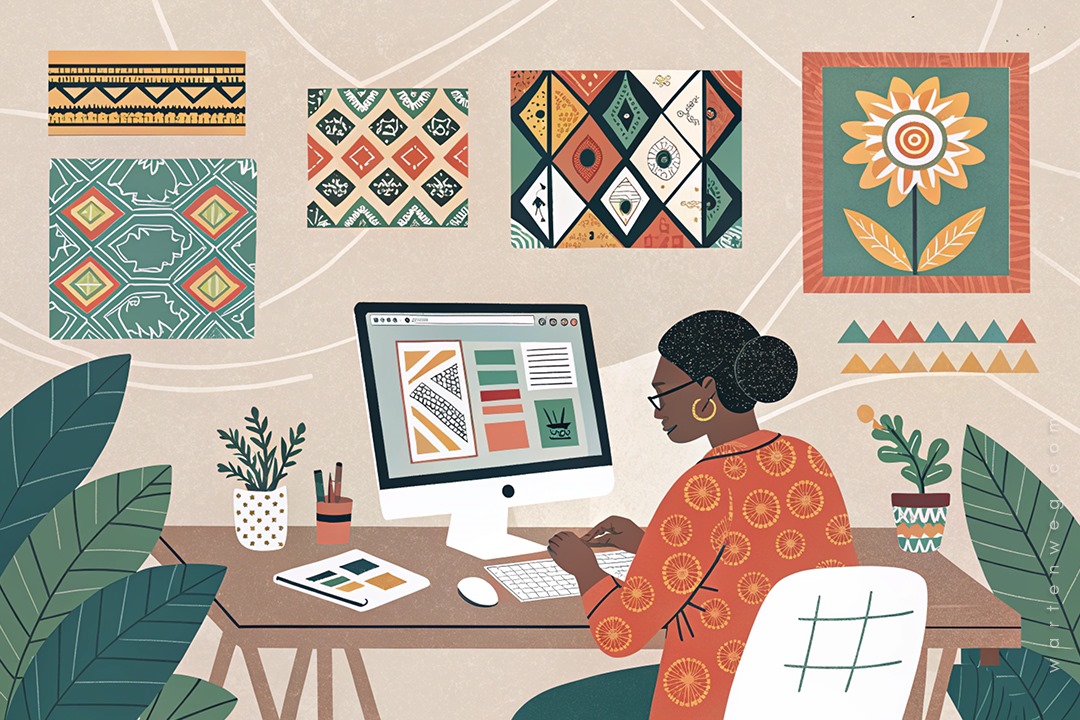Skills and Techniques for Graphic Design: Hustling Your Visual Game in Jozi’s Creative Streets
Ayeee, designers! Let me enlighten you about practical skills and techniques for graphic design. It’s straight from the streets of Joburg. There, creativity isn’t just a skill. It’s a survival hustle!
Table of Contents
The Real Talk: Graphic Design Ain’t Just About Looking Nice
Listen up. Whether you’re a rookie designer trying to make your mark, graphic design is more than just making things look pretty. If you are a seasoned pro looking to level up, it’s about telling stories. It’s about dropping visual bombs that make people stop and stare. You communicate without saying a single word.
Typography: Your First Weapon of Mass Communication
Yo, fonts are not just letters—they’re the heartbeat of your design! Think of typography like a DJ mixing tracks. You gotta know how to blend different fonts, create rhythm, and make each letter sing.
Font Pairing Like a Boss:
- Mix weights and styles like you’re creating the perfect playlist.
- Create tension that keeps eyes glued to your design.
- Use kerning and tracking to make your text breathe.

Design is not just about making things look pretty; it’s about telling stories visually.
Composition: Telling Stories Without Words
Your design canvas is like a stage, and every element is an actor with a role to play. The Rule of Thirds? That’s your blocking strategy. Visual cues? They’re your script, directing the viewer’s eyes exactly where you want them.
Composition Pro Tips:
- Place key elements strategically.
- Use negative space like a ninja.
- Guide the viewer’s journey through your design.
The Digital Arsenal: Software Skills That Pay the Bills
In Jozi’s design game, software skills are your passport to the big leagues. We’re talking about the Adobe holy trinity:
- Photoshop: The image manipulation king
- Illustrator: Vector graphics wizard
- InDesign: Layout and typesetting master
Soft Skills: The Unsung Heroes
Technical skills? Important. But the real magic happens when you blend those with killer soft skills:
- Creativity: Think outside the box, then throw the box away.
- Communication: Understand what the client REALLY wants.
- Adaptability: Trends change faster than taxi routes in Joburg.
The Continuous Hustle: Never Stop Learning
Graphic design isn’t a destination; it’s a journey. Keep your skills sharp:
- Follow design websites and galleries.
- Challenge yourself with personal projects.
- Welcome feedback like it’s your favourite street vendor’s special.
Freelance Survival Guide
For all my freelance designers grinding in the digital streets:
- Build a killer portfolio.
- Network like your rent depends on it (because it does!)
- Diversify your skills – be the Swiss Army knife of design.
Top 5 Skills Every Designer Needs
- Creative Problem Solving
- Technical Software Proficiency
- Typography Mastery
- Understanding Colour Theory
- Communication & Client Management
Hard Skills Breakdown
- Adobe Creative Suite
- UX/UI Design
- Vector Graphics
- Print Design
- Digital Marketing Design
The Kasi Mindset: More Than Just Design
Design is about storytelling. Every project is a chance to represent your culture, your hood, your vibe. In Jozi, we don’t just design – we create visual experiences that punch you in the feels.
Real Talk: Turning Passion into Profession
Want to make it in this game? Here’s the secret sauce:
- Stay hungry.
- Stay foolish.
- Never stop learning.
- Respect the craft.
DOS and DON’TS Skills and Techniques for Graphic Designs
| Category | DOS | DON’TS |
|---|---|---|
| Technical Skills | • Master Adobe Creative Suite (Photoshop, Illustrator, InDesign) | • Don’t use too many fonts in a single design |
| Typography | • Learn and practice typography fundamentals | • Don’t ignore proper font pairing and hierarchy |
| Color Theory | • Understand color psychology and impacts | • Don’t use random color combinations without purpose |
| Portfolio Development | • Develop a diverse portfolio showcasing multiple styles | • Don’t copy other designers’ work without transformation |
| Software Proficiency | • Stay updated with current design technologies | • Don’t use outdated design techniques |
| Professional Growth | • Seek constructive feedback from mentors | • Don’t be defensive about design criticism |
| Networking | • Participate in design challenges and communities | • Don’t isolate yourself from design industry trends |
| Client Communication | • Develop strong communication skills | • Don’t ignore client briefs and expectations |
| Design Process | • Document and showcase your creative journey | • Don’t rush through design without proper planning |
| Continuous Learning | • Attend design workshops and conferences | • Don’t stop learning and experimenting |
| Creative Approach | • Experiment with different design techniques | • Don’t compromise on design ethics and originality |
| Technical Details | • Practice consistent visual hierarchy | • Don’t use low-resolution images |
| File Management | • Maintain organised design files | • Don’t neglect version control |
| Skill Enhancement | • Learn basic web design and coding principles | • Don’t limit yourself to a single design style |
| Professional Attitude | • Be adaptable and open-minded | • Don’t undersell your design skills |
Pro Tip: Graphic design is a journey of continuous learning and creative exploration. Balance technical skills with artistic expression!
Your Design Journey Starts Now
Remember, legends weren’t born perfect – they were born persistent. Every design is a stepping stone, every project a lesson.
To all the designers hustling from Soweto to Sandton, from township to corporate – your visual voice matters. Keep pushing, keep creating, keep designing!
Graphic Design Motto: Create like everyone’s watching, but design like you don’t care what they think.
Bonus Pro Tip: Your design portfolio is your street cred. Make it shine brighter than a fresh pair of kicks!
Ngyabonga (Thank you), A Designer from the Streets

Quick Hits: Design Skills Checklist
Technical Skills
- Adobe Creative Suite
- Vector Graphics
- UI/UX Design
- Print Design Fundamentals
Soft Skills
- Creativity
- Communication
- Adaptability
- Continuous Learning
- Client Management
Final Drop – Techniques for Graphic Design
Graphic design is more than a job – it’s a lifestyle. Respect the craft, stay hungry, and always be ready to drop a visual masterpiece!
5 FAQs: Techniques for Graphic Design
What are the essential techniques for graphic design?
The most essential techniques for graphic design include mastering typography. Understanding composition principles is also critical. Designers should develop skill in industry-standard software like Adobe Creative Suite. These foundational skills allow designers to create visually compelling and communicative designs that effectively convey messages and capture audience attention.
How can I improve my graphic design techniques?
Continuous learning and practice are key to improving graphic design techniques. They involve studying design trends and experimenting with different styles. It is important to seek constructive feedback from peers and mentors. Engaging in personal projects can help expand your creative repertoire. Participating in online challenges and exploring design websites and galleries helps refine your technical skills.
What software techniques are crucial for graphic designers?
Modern graphic designers must master Adobe Photoshop for image editing. They should also excel in Adobe Illustrator for vector graphics. Additionally, skill in Adobe InDesign for layout design is crucial. Each application provides critical techniques for their respective purposes. These tools offer versatile capabilities for creating scalable graphics, manipulating images, and producing professional-quality designs across various mediums.
How important are typography techniques in graphic design?
Typography techniques are fundamental in graphic design. They involve strategic font pairing, understanding visual hierarchy, and utilising kerning and tracking. These techniques create visually balanced and emotionally resonant compositions. Effective typography goes beyond mere text choice. It transforms letters into visual storytelling elements. These elements communicate meaning and evoke specific emotional responses.
What soft skills complement graphic design techniques?
Soft skills like creativity, adaptability, communication, and continuous learning are essential complements to technical graphic design techniques. These skills allow designers to understand client needs. They help in collaborating effectively. Designers solve design challenges innovatively and continuously evolve their craft in the dynamic world of visual communication.

